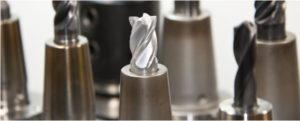Design for manufacturability, or design for manufacturing, is a concept often discussed during conversations about saving money. Design for manufacturability can promote time efficiency and waste reduction by considering fabrication during the planning process. For this reason, the design phase, rather than production, is the ideal place to cut costs. When it comes to CNC machining, saving machine time, as well as programming and setup time, means saving money.

Listed below are four tips to help you save both on your CNC machined parts.
Use Aluminum Instead of Steel
This may not be a surprising tip coming from an aluminum fabricator, but there are plenty of sound reasons aluminum use in on the rise in many industries. The hardness of steel can make it time-consuming to machine. Utilizing aluminum instead can decrease the time needed to machine each part, as well as reduce tool wear, ultimately saving you money. A switch to aluminum need not sacrifice your part’s durability or strength.
Aluminum is also a less expensive material than steel by volume, so you have the opportunity to cut your material cost as well. For more information about the benefits of aluminum, visit the Aluminum Association’s Aluminum Facts at a Glance.
Reduce Your Number of Operations
Unless you’ve already recognized your part must be machined on a 5 axis CNC, keep in mind that only one side of your part may be machined at a time. This means your part may have to be flipped multiple times and require multiple operations. Each flip, or operation, requires setup, tool changes, loading, machining, and unloading.
Reducing the number of operations, if possible, can help you save, especially if you have a low volume run.
Consider Hole Size and Depth
As a general rule, it takes more time to accurately drill a small, deep hole than a larger or shallower one. Try to keep your hole depth less than five times your hole diameter.
Second, try to utilize standard drill bit and end mill sizes. Standard drill bit and end mill sizes are more readily available, and therefore less expensive that custom bits. If you’re able to exploit a standard size instead of a custom one, do it.
Another thing to consider is that holes with flat bottoms must be cut with an end mill, which will require a tool change from the conical tip used for drilling.
Provide a Clear Print
This is critical. Providing an intelligible print can prevent delays in the quoting process because you can avoid going back and forth with questions that could have been answered by including important information in your initial print. Your print is what speaks for your part when you are not around, so it should answer as many potential questions as reasonable.
At the least, your print should:
- Be legible in black ink
- Have a unique part number
- Specify your desired tolerances
- Include any specific material or finishes you may require
Feature useful, accurate information in the title blockSpecifying your tolerances clearly and reasonably can perhaps save the most heartache, as indicating a more specific tolerance than necessary can be needlessly expensive–with machine operators spending time achieving an unneeded level of accuracy.
In order for your machine shop to best serve you and aid with confirming your part’s manufacturability, also share information about your part’s function. If your machine shop understands how your part works and how it’s being used, their staff can give helpful suggestions on how to best fabricate it.
If you’re researching ways to save money on your CNC machined parts, Fab Masters Company can provide the fabrication expertise you need to save time and money on your aluminum extruded parts. More information about our design assistance and CNC machining capabilities is available on our website.
